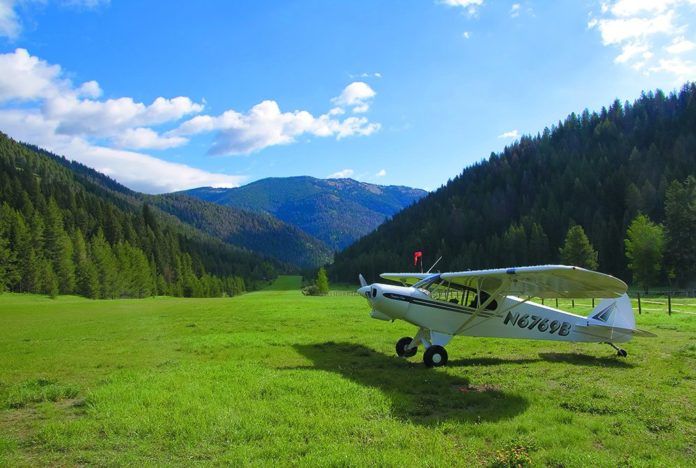The development of Piper’s Super Cub is as much a story of survival as it is progress. While the role of the original J-3 was mainly for training, Piper had to bring more utility to the table than the Cubby’s 75 MPH cruise speed, 200-mile range and 450 FPM climb performance. Enter the refined PA-18 Super Cub, a design that’s still being tweaked some 66 years later through several so-called Cub clones, which includes nicely executed models from Cub Crafters and American Legend Aircraft, to name a couple.
Still, there’s no arguing that a real-deal PA-18 can hold its own in the outback as a get-down-to-business workhorse as much as it can satisfy the appetite of weekend warriors showboating at their lakehouses, ski cabins and backcountry landing strips. And a good Super Cub isn’t a bad investment, either, hanging on to its value in a market where some other utility machines take it on the chin. Tricked out with engine mods and aesthetic improvements, it’s not uncommon for a Super Cub to sell we’ll north of $125,000, and much more when rebuilt to new standards,
Because it’s so versatile, delightfully fun to fly, not terribly expensive to operate and possessed of what can only be called the Cub cachet, a PA-18 holds its value better than almost any other airplane.
In the hands of a pilot who’s aware of its limits, a Super Cub can do about anything, except go fast. Being comfortable in one might require some aftermarket tweaking, too.
Because there are so many modifications to PA-18s, legal and otherwise, and because a significant proportion have been worked hard and put away wet, so to speak, finding a good one requires the willingness to do homework and have a pre-purchase inspection performed by someone who knows the marque.
Model Origins
The Super Cub’s family tree grew from the 1935 E-2 Cub, which, once the cockpit was enclosed and a slightly larger engine installed, became the J-2 and in 1937, the J-3 Cub. Mimicking the yellow-and-black paint scheme to compete with the popular Aeronca C-3 and with more room and better performance, the Cub sold in droves, reaching its production peak in 1946.
In 1948, it was spruced up and renamed the PA-11. The PA-18 Super Cub model appeared in 1950, although the first, the PA-18-95, was little more than a PA-11 with a 90-HP Continental. Coincidentally, the PA-18-105 debuted with a 115-HP Lycoming, flaps, a counterbalanced elevator and other features that separated the Super Cub from its ancestors.
In 1951, the O-235 was replaced with a 125-HP O-290; in 1952, that engine got souped up to 135 HP. Finally, in 1955, the Super Cub got the engine that it really deserved: a 150-HP Lycoming O-320-A2A, which it kept until Piper dropped it from the line in 1994. The Super Cub remained essentially unchanged throughout its production run.
All Super Cubs carry the PA-18 designation. Those originally fitted out as agplanes were called PA-18As; these should be looked on with caution, because of a likely history of hard use and exposure to corrosive chemicals.
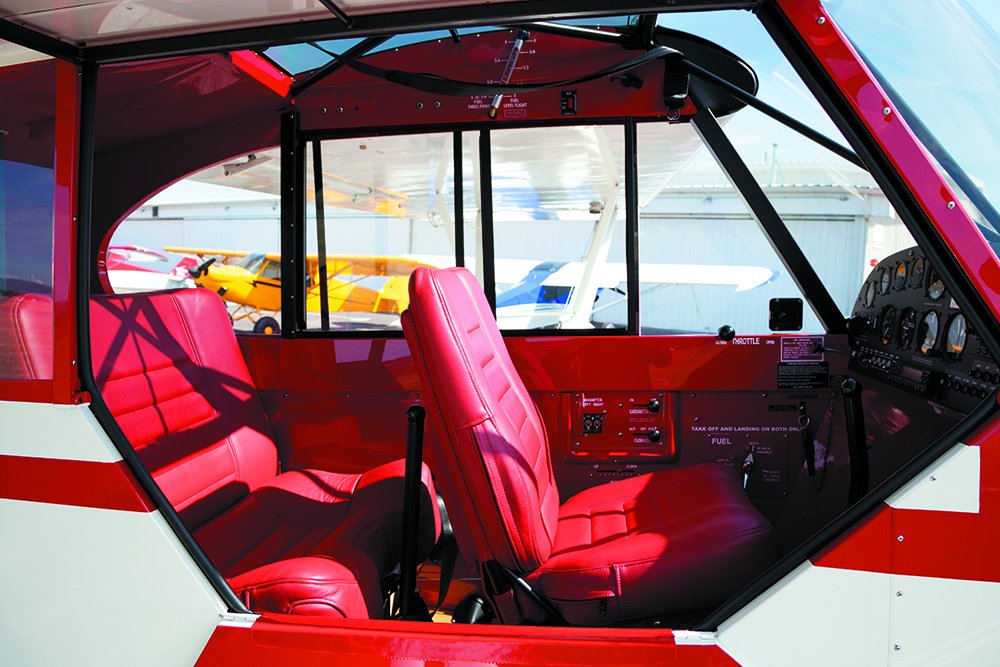
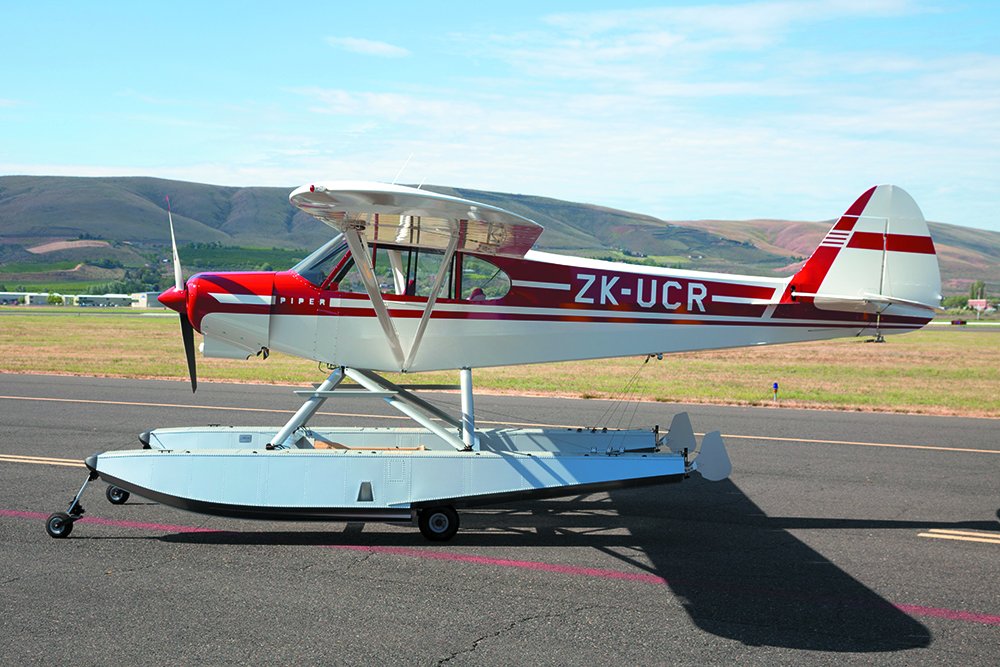
Changes and options to the Super Cub were few over the years and came, as in the old VW Beetle, only as necessary improvements. Here’s a list of some of the more important functional changes:
In 1961, an optional metal belly pan was made available on all Super Cubs. (Previously, it was supplied only on the cropdusting versions.) The mod also includes a beefed-up lower rear fuselage. The option is a good one, but watch out. Many of the airplanes ordered with it were used as chemical sprayers, and the structure may have suffered corrosion as a result.
About 1965 (even Piper couldn’t tell us the exact date), zinc chromate anti-corrosion treatment was added to the wings. If you’re considering a mid-60s model, remove an inspection cover and check the color of the metal. Yellowish green is good, anything else is not so good. At the same time, Piper beefed up the fuselages with more 4130 steel and heli-arc welding.
In 1971, Piper switched from Grade-A cotton fabric covering to long-lasting Ceconite. Although cotton shrinks less in cold weather, it has a shorter lifespan, from three to a maximum of 10 years. Ceconite, by contrast, will last 10 years under most conditions and can go much longer than that if pampered.
In 1976, the old visual float fuel gauges were replaced with panel-mounted electric gauges. Although they are neater looking, pilots tell us the old gauges are more accurate and reliable.
In 1977, Piper switched from the old-style DC generator to a 60-amp alternator. The alternator is retrofittable to older models, however, and is a desirable feature for Super Cubs equipped with multiple radios, strobes and other electrical gear.
In 1978, the ailerons were changed from fabric to aluminum. Although cheaper to fabricate, the metal surfaces are not so easily repaired, a problem for bush operations. Like the alternator, the metal ailerons are retrofittable to older airplanes. The year 1978 also saw a switch to more powerful and reliable Cleveland brakes, a partial solution to the Super Cub’s long-standing awkward and ineffective heel brakes. These are retrofittable to older aircraft.
Like many other airplane models, the Super Cub died in the Big Slump that hit general aviation in the early 1980s. In 1981, Piper sold off the marketing of the Super Cub to a Texas company called Wes-Tex, for which Piper manufactured airplanes to order in lots of 50 or so. That arrangement lasted only two years and production of the PA-18 line ceased altogether in 1983 after a total run of 33 years and 8442 aircraft.
In an attempt to revive the line in 1988, Piper announced that it would resume production of the PA-18, and even offered an innovative new purchase scheme designed to hook into the successful homebuilt industry: A buyer could purchase a Cub kit and build it under factory supervision.
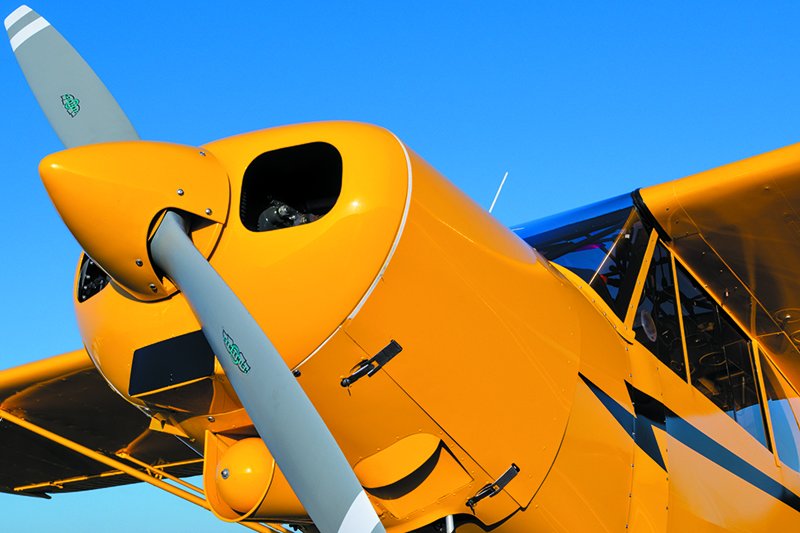
The kit idea really never took off, at least in part because of Piper’s financial troubles. The option was dropped after a couple of years and today owner-assembled airplanes are valued at some $12,000 less than their factory-assembled peers.
Production of new Cubs continued, sort of; three were built in 1988, 49 in 1989, seven in 1990, none in 1991 (bankruptcy) and only one in 1992. The line ramped up in 1993; and 108 were built before production was stopped entirely after the 1994 model year. The emergence of New Piper divorced the company entirely from anything to do with new Cubs.
Market Scan
Simply put, the Super Cub holds its value extremely well. Scanning values in a recent Aircraft Bluebook, we note that even recent models are worth more than their new list price, although inflation isn’t figured into the numbers. If a bargain comes on the market, it’s wise to check carefully for serious corrosion or other hidden surprises. There are not any inexpensive Super Cubs.
A 1975 model, for example, sold new for $19,700, but in 2011, Bluebook gives the average retail as $65,000, a bit more than it was the last time we reviewed the Super Cub five years ago. Trade-A-Plane shows listings in the 90s, with some asking prices we’ll north of $110,000. Some of these are equipped with color mapcoms and GPS.
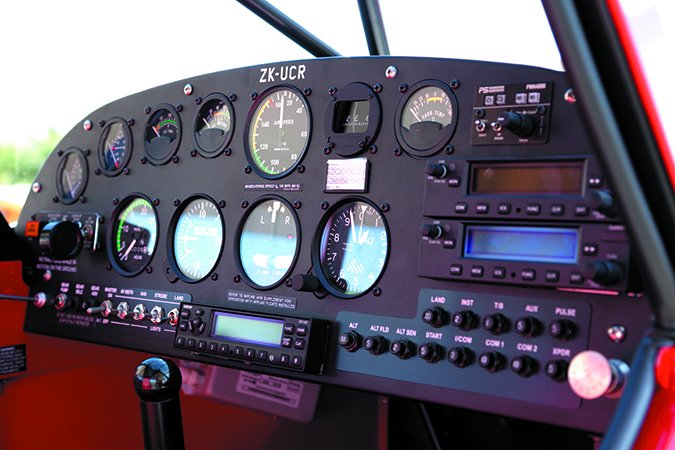
For comparison, consider the Aviat Husky, an airplane designed to compete directly with the PA-18, but equipped with 30 more horsepower. A 1989 Husky’s average price when new was $63,400 and is now has an Aircraft Bluebook value of $56,000. A similar-vintage Super Cub sold new for just over $56,000 and is now worth nearly $80,000, according to the Bluebook.
In 1980, we commented on the excellent resale value of the older models and went on to state: “It’s not likely that the current production Super Cubs will do as well; the current new price of $30,000 is highly inflated and it’s doubtful that a 1980 Super Cub purchased today will ever fetch $30,000 again (assuming reasonable inflation rates).”
Well, guess what? The current value of a 1980 Super Cub is roughly $72,000. Checking the inflation tables, $30,000 in 1980 dollars is about $86,000 in 2016 dollars.
Performance
It’s not hard to imagine what happens when you put a big engine and a big wing on a light, two-place airplane: STOL performance to burn and this is why people buy Super Cubs. Although bigger, more complex and more expensive aircraft like the Helio Courier have established excellent reputations for STOL performance, if you ask the people who really use them—the bush pilots, the cropdusters, the outback charter pilots—the Super Cub is usually considered the ideal STOL airplane.
One Alaskan bush pilot summed it up this way: “Owning the Super Cub is like owning a vital share in the Alaska bush flying arena, if there is such a thing. Knowing that it is the Super Cub that pioneered true off-airport operations in terribly rough terrain and continues to hold its own as the king of STOL working bushplanes. That’s just my opinion, based mostly on working them and the simple fact that it is the most widely used airplane here when I look around the bush flying community.”
It comes from this: Book takeoff roll at gross weight is 200 feet. Heavily overloaded, a Super Cub may grind along for 300 feet before becoming airborne, pilots tell us. Now, with the addition of VGs and progressively larger engines, takeoff rolls in the double digits on calm days are being reported.
Book rate of climb is 960 FPM, although that’s at 50 MPH, which generates a climb gradient of some 22 percent. That claim might be viewed with at least a raised eyebrow, given our examination of Super Cub accidents—many involved hitting an obstruction after takeoff or stalling while trying to clear an obstacle. Either that or optimistic pilots are given to try and get more performance out of Super Cubs than was ever built in.
The tradeoff, even with lots of power, is that a Super Cub is not going to get anywhere quickly. Figure on cruise speeds in the 100 to 110 MPH range on 8 to 8.5 GPH.
Range/Payload
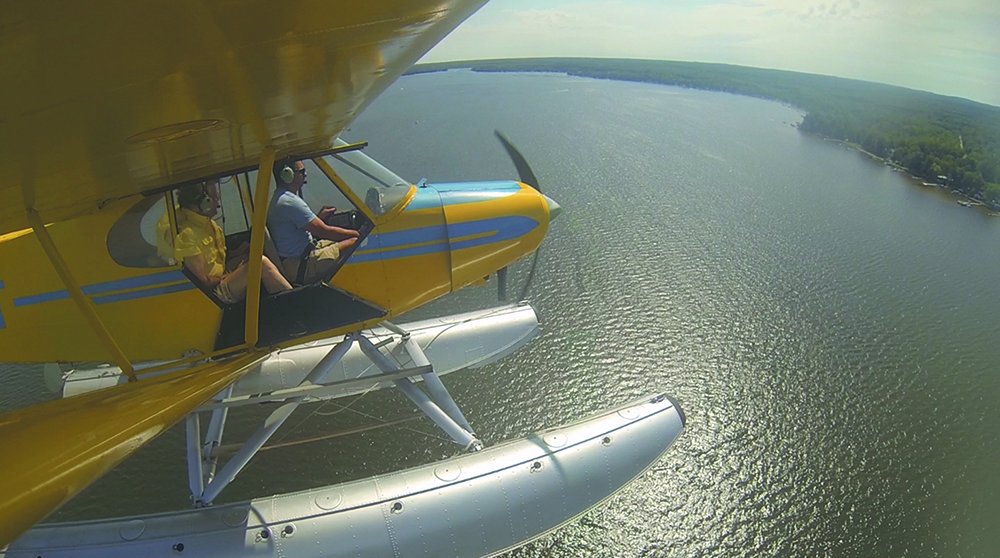
Discussing the legal loading of Super Cubs is enough to send working pilots into knee-walking howls of laughter. The PA-18 is probably overloaded more consistently, by bigger margins, than perhaps any other airplane, perhaps other than the Husky, which has the same space and a smaller legal payload.
Yes, we see the ivory-towered safety set waving the index finger at us. However, they overlook the need for a pragmatic approach to professional aviation, particularly in the back country, and probably wouldn’t know a Super Cub if it leaked oil on them.
They don’t take into account that the 150-HP Super Cub has the same engine as the Cessna Skyhawk had for many years, as we’ll as a bigger wing, but a gross weight of 550 pounds less. “Overload” a Super Cub by 550 pounds and you’ve still probably got more climb performance than a grossed-out Skyhawk. In these days of marketing hype, the word “Super” can still mean something.
In the context of tailwheel airplanes, with their designed-in instability on the ground, unforgiving nature in crosswinds, poor visibility in three-point attitude and willingness to bounce unless the landing is just right, the Super Cub may be easier to handle than most. It has no built-in bad habits on the ground, although the heel brakes can be challenging to the newcomer. It has very good visibility over the nose from the front seat, from which it is soloed. Not so the back seat.
So long as a pilot is willing to learn how to fly a tailwheel airplane and give it his or her undivided attention on landing and takeoff, the Super Cub is capable of handling strong winds and challenging landing areas safely. That being said, the loss of control accident rate for the Super Cub is awful. The heel brakes come in for some share of the blame, but tailwheel airplanes are more demanding than nosewheel models.
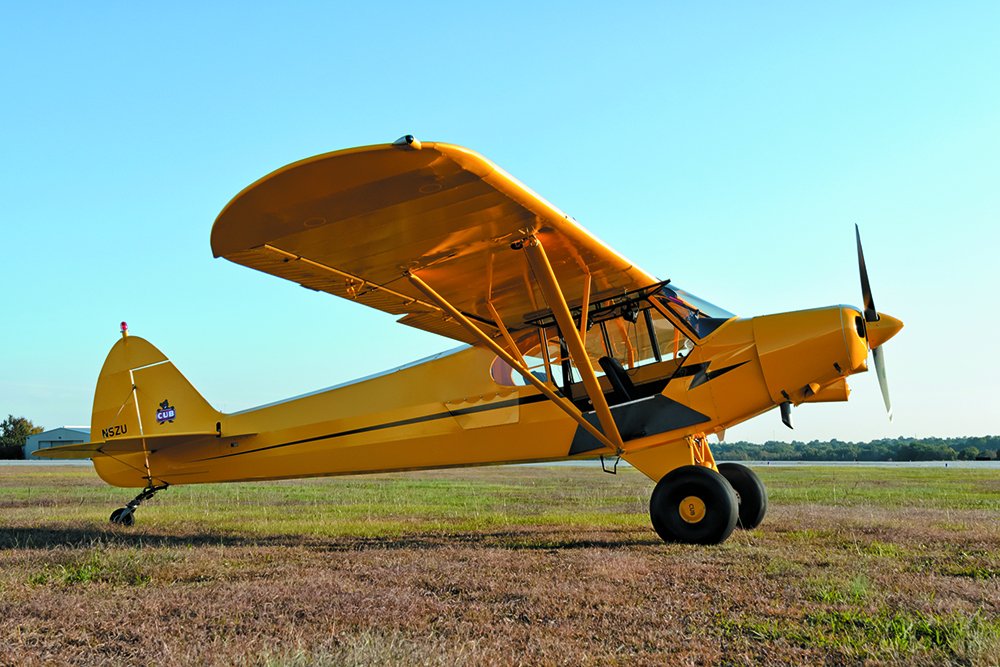
Christopher Buff
Because many of the Super Cub landing and takeoff accidents we reviewed occurred at off-airport sites and because the PA-18 is so capable, it may be causing pilot egos to write checks their skills can’t cash by attempting to operate on strips that are simply too short or too narrow for the pilot to handle.
In the air, the Super Cub flies like a Cub. That’s good and bad. It does handle as nicely as a Cessna 150, for example, but it’s generally easy to fly for a 1930s design, harmonized in pitch and yaw, but ponderous in roll. It’s forgiving in all phases of flight except for an uncontrolled stall and there is virtually no stall warning.
Inflight handling does not change much when either floats or skis are swapped for wheels, something that makes it a good airplane for pilots transitioning to floats or skis. Its lack of dihedral means it has no roll stability. Bags of adverse aileron yaw require that a pilot learn to use the rudder, something that is essential when maneuvering because it is vicious in an uncoordinated stall, rolling rapidly and losing 300 to 400 feet of altitude quickly.
This behavior has killed more than a few folks engaged in pursuing wildlife at low altitude and who didn’t keep the ball centered when yanking and banking. In Alaska, the resulting low-altitude stall, roll and dive into the ground has gained the appellation, “moose stall.” We were told by a number of pilots that the installation of VGs makes an uncoordinated stall much less exciting, taming the roll and nose drop.
Admission should be charged to the comedy routine that is a first timer entering a Super Cub. Once inside, legroom is poor while shoulder and headroom is more than adequate. Stock seats become quite uncomfortable after a couple of hours of flight. Aftermarket seats can improve the situation dramatically. Baggage room is limited to a shoulder-width compartment behind the rear seat. Visibility is perhaps poorer than you’d expect from a tandem high-wing, but you’d be right to expect quite a lot. Noise damping in flight is almost non-existent, so bring a good headset.
Maintenance
Generally, the Super Cub is a rugged and robust airplane that’s easy to fix in the field. Annual inspections typically run in the $500 to $700 range, although some get by for next to nothing if the owner does a lot of the work himself. On the other hand, the fabric covering and steel tube fuselage means that the potential for catastrophic annuals is always just around the corner. Corrosion is becoming an increasingly serious concern as the airframes age.
Derek DeRuiter of Northwoods Aviation in Cadillac, Michigan, a company that has long operated Super Cubs on wheels, floats and skis, reported that their Super Cubs are easy to maintain and that switching from wheels to floats takes only three hours compared with more than ten for a Husky. Further, installing wheel skis takes only an hour. He also reported that parts have always been readily available, a definite consideration when purchasing a vintage aircraft.
According to Super Cub mechanical mavens, here are some specific potential trouble spots to look for when considering any used PA-18 for purchase:
Corrosion in the steel fuselage tubing and wing struts and forks. Particularly check the lower rear tubes, and be extra careful if the plane has done any spraying duty.
Fatigue cracks in the threaded clevis bolts on the wing struts.
Worn-out landing gear hinge and shock strut bolts and bushings. The Super Cub gear is likely to have taken a frightful pounding over the years; inspect it closely.
Worn top rudder hinge bushing, especially on aircraft with rudder-mounted beacons.
Loose or worn-out elevator trim jackscrew, especially in aircraft used for glider or banner towing.
Another item to consider: Find out the airplane’s service history and inspect accordingly. Try to avoid airplanes used for glider or banner towing or cropdusting. If it served as a bushplane, check the landing gear carefully and double-check the accident history and repair log.
Pipeline patrol is easy on engines but tough on wings because of the constant turbulence at low levels. And remember that tailwheel airplanes such as the Super Cub are likely to have a groundloop history, so check for hidden wingtip damage.
There’s a significant AD on the wing struts, AD 93-10-6 (this was once two ADs, 77-3-8 and 81-25-5). Part of the AD calls for annual inspections of the struts for corrosion, as we’ll as treatment with a rust inhibitor (linseed oil). The service bulletin the AD specified using a Maule punch tester on the strut; however, some mechanics doubt the effectiveness of this test.
The other part of the AD addresses the lift-strut forks. According to the AD, the original machined-thread forks were prone to fatigue cracking. The fatigue apparently originated at the bottom of the thread grooves, which were very sharp. The problem was exacerbated by people using the struts as steps when getting in and out of the airplane.
The AD calls for Magnaflux inspection of the forks to detect cracks, with the inspection repeated every 500 hours thereafter. If no cracks were found, then the forks could be returned to service if they had less than 2000 hours on them (1000 hours for floatplanes or any airplane that had been on floats at any time in its life).
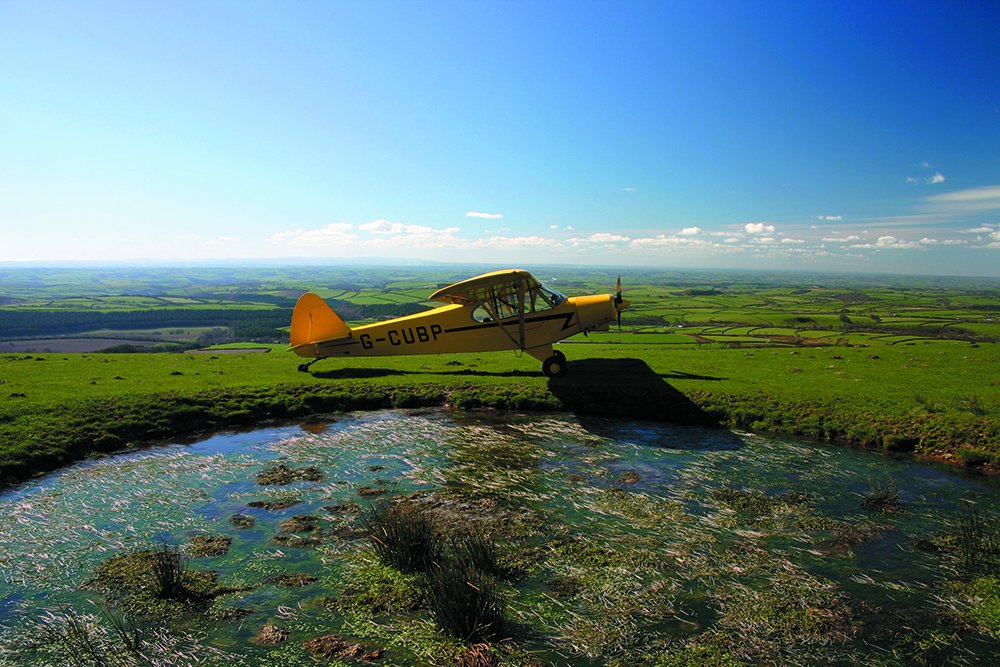
Modifications
“Millions of ‘em.” That’s a good description for the number of mods available for Super Cubs. Owners swear by VGs on the PA-18 for stall speed reduction and improving stall behavior. Safety cables—attached to the landing gear to keep it from collapsing—should a bungee or strut fail, are popular. Shoulder harnesses retrofits are a must, in our opinion. Tundra tires, baggage pods, wider cabins, even nitrous oxide injection is out there for sale. To get feedback from users, we recommend going to www.supercub.org, which has become the de facto place to be for those interested in the Super Cub. The site is a wealth of information for Super Cub owners. Steve Johnson runs www.supercub.org, the website for information and conversation on the PA-18.
Cub Crafters builds a “Top Cub” which is modeled on the Super Cub, but certificated under FAR 23. And since our last report, it has introduced the Carbon Cub in the LSA category, with a 180-HP ASTM-approved engine. The airplane stomps the competition at Alaska’s STOL contests—but it can’t carry 500 pounds of elk meat.
Although it bases the designs of its airplanes on the Super Cub, CubCrafters significantly altered and improved the airframe, so few if any of the parts are interchangeable with a PA-18. However, CubCrafters does specialize in Piper Super Cubs and will completely rebuild them or install many of the numerous available mods.
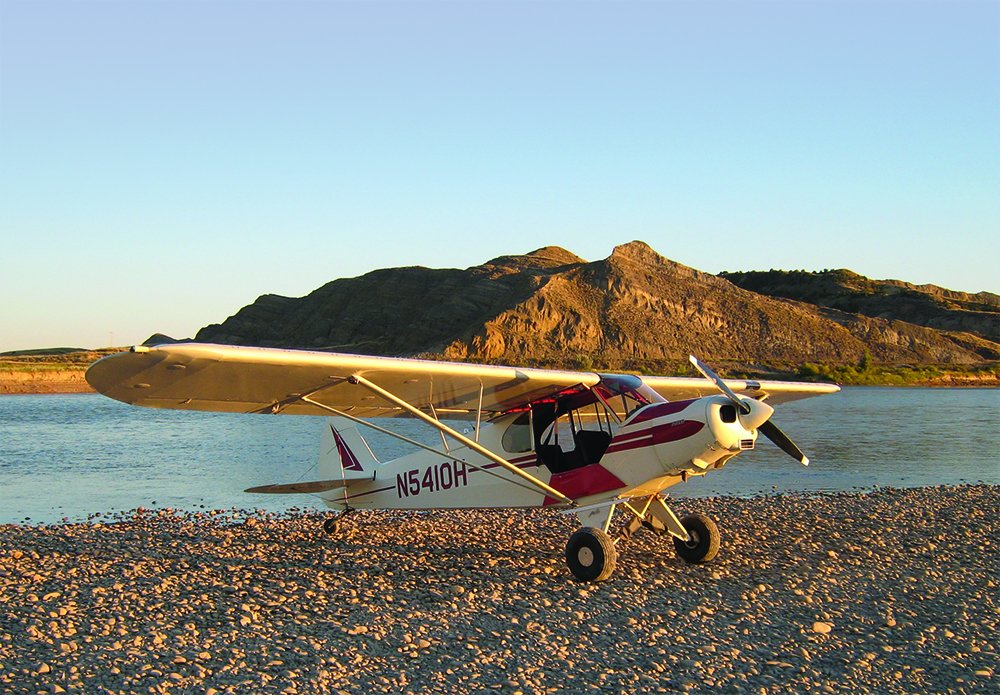
You can hand over your own Super Cub for rebuild, or Cub Crafters can provide one. As Cub Crafters’ John Whitish put it: “Most folks don’t want their Cub “as new,” they want it better.” This might include a 180-HP engine, extended heavy duty landing gear, new avionics and a variety of other modern amenities. For that reason, it’s not uncommon for owners to invest $150,000 just in the rebuild. Contact Cub Crafters at www.cubcrafters.com.
Owner Comments
We operate a Super Cub on floats in the summer and on skis in the winter here in Cadillac, Michigan. The Super Cub performs great with any gear configuration, wheels, floats, amphibious floats, skis and wheel/skis, always having short takeoffs and landings and a good climb rate. We do a great deal of seaplane instruction and students learn to fly the airplane quickly, as it is easy to fly, but challenging to fly well.
It is easy to maintain and it is easy to completely rebuild it to be better than new. There are a huge number of STCs available, with the auto fuel STC being important for float operations.
On the downside, the plane has limited room for people and baggage, and it’s hard to get in and out of the cockpit. Cruise speed is slow, especially with a seaplane prop and the cost of buying one is very high, because of the nostalgia of the Super Cub. It will fly into the stall with little warning and you must keep the rudder coordinated.
I enjoy flying both the Super Cub and Husky. They are very similar in design and function. Aviat did a great job with the Husky, improving on the pattern of the Super Cub. In the end, however, I would choose a well-restored and equipped Super Cub over a Husky.
Derek DeRutier, Northwoods Aviation
Cadillac, Michigan
I have owned my more or less stock PA18-150 (G-CUBP, now VH-YUP) since 2002 and flown it just under 900 hours, mainly into short farm fields in SW England and in Australia for the last year. I love this aircraft. Nothing beats loitering in a Cub on a soft, still summer evening with the door open and the wheels kissing the grass at last light.
The aircraft is easy to fly (one of the easiest of the taildraggers), but it is so easy it lulls you into a false sense of security and will bite if you are careless. It slows down very quickly and you can easily get way behind the curve on the landing approach, where you need to be ready with lots of power. It’s a stick and rudder aircraft and unless you master the use of rudder input, your passenger is in for an uncomfortable ride. I have Micro Aero VGs and thoroughly recommend them, less for their effect on stall speed than for their effect on aileron authority at low speed.
My 15-year-old son has been flying with me since he could walk and now flies solo in the Super Cub after a few hours of tuition. It’s a great teaching aircraft.
The only thing is a Super Cub is slow—really slow. That wasn’t such a problem in the UK and Europe. Here in Australia it’s more of an issue, especially since the stock seating is not comfortable. An upgrade from Oregon Aero is a good option. One important thing to note: I bought a Gallet helmet at great expense. The front seater, especially, is surrounded by a cage of metal which will bash his head in any kind of accident.
I draw your attention to the FAA study from Alaska, which included the following quote: “Thirty three lives might have been saved through the use of helmets in tandem seat airplanes, such as Super Cubs.”
My advice to any Cub pilot, especially ones who are using them for their intended purpose of backcountry aviation, is to invest in a good helmet and use it. It’s way cheaper than even a minor head injury.
If you want an opinion on the Legend Cub and Super Cub, contact Dan Compton, who is training ab initio in them here in Australia: http://www.wingsoutwest.com/.
David Berger
via email
Maintenance on a good Super Cub in dry Wyoming is relatively painless and annuals run in the neighborhood of $450 to $650. Being a fabric-covered aircraft leaves the door open for substantial repair in the future. Care and maintenance is reflected in the lifespan of the fabric.
The Lycoming O-320, 150-HP is nearly bulletproof provided it is run on a regular basis and receives scheduled oil changes. It will digest about any fuel you feed it.
We see 106 MPH at 2475 RPM, burning 8 to 8.5 GPH. Admittedly not something that will light your hair on fire, but the Super Cub’s beauty is in its slow flight characteristics and its ability to get in and out of short, unimproved strips that would drench the underwear of a pilot flying anything else.
Ray Dennis
Casper, Wyoming
My 1964 Super Cub was totally restored in 2000 with Wipline 2100 amphibs, 160-HP and numerous other mods. The aircraft is low maintenance with 400-plus hours since major overhaul.
It burns about 9 GPH and VGs give it a 28 MPH docile stall. The aircraft works we’ll on the water, getting off in eight to 10 seconds. Insurance runs $2400 a year.
We own four aircraft and the Super Cub is by far the most fun.
Gordon Richardson
Caldwell, Texas

